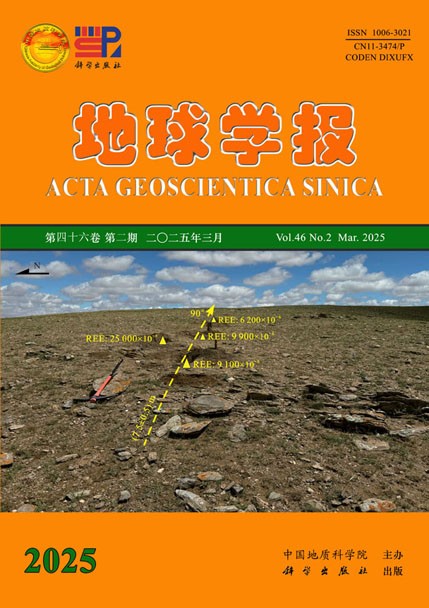
|
封面故事:华北克拉通北缘内蒙古巴彦淖尔稀土矿化带。侯增谦院士研究团队创新性地建立了碳酸岩型稀土矿床成矿理论体系, 建立了多方法联合协同勘查评价体系, 创新多尺度、多粒级稀土元素地球化学调查方法。并据此在巴彦淖尔空白区实现中-重稀土找矿突破。首次在该区发现多处碳酸岩-正长岩杂岩体, 系统阐明了杂岩体成因机制及其壳幔混元的源区特征。结合靶区多方法联合协同勘查-资源快速评价, 在该区乌兰哈达发现长达5 km的高价值稀土矿化带, 构建了一支“成矿理论+应用技术”的稀土找矿团队。这项由自然资源部深地探测与矿产勘查重点实验室侯增谦院士团队完成的研究成果, 当选中国地质科学院2024年度十大科技进展, 排名第一。(照片提供: 刘琰)
Cover Story:The REE mineralization belt in Bayannur, Inner Mongolia, is located on the northern edge of the North China Craton. The team led by Academician HOU Zengqian has established an innovative system of metallogenic theories for carbonatite-related REE deposits, developed an integrated exploration and evaluation system and created innovative multi-scale, multi-granularity geochemical survey methods for REE. By applying these methods, the team has found a high-valued REE mineralization belt within the previously unexplored region of Bayannur. For the first time, several carbonatite-syenite complexes were identified in the area, and their genetic mechanisms and crust-mantle mixing source characteristics were systematically determined. Through multi-method integrated exploration and rapid resource evaluation in the target area, a ~5 km-long high-valued REE mineralization belt was discovered at Wulanhada. A specialized REE exploration team was established to integrate the metallogenic theory with applied technology. The research achievement acquired by Academician HOU Zengqian, the Key Laboratory of Deep Earth and Mineral Exploration, Ministry of Natural Resources, ranks the first among “Top Ten Geological Sci-tech Progresses of CAGS in 2024”. (Photo by LIU Yan)
|

